A Story of Bark
Jay Davis
September 9, 2023 info
I’ve been working on identifying trees by bark. I can easily identify Sourwood and Mockernut Hickory. Here are a couple examples that show the defining characteristics of the bark of Sourwood and Mockernut Hickory, both of which are common in my area of Atlanta near the Chattahoochee river:
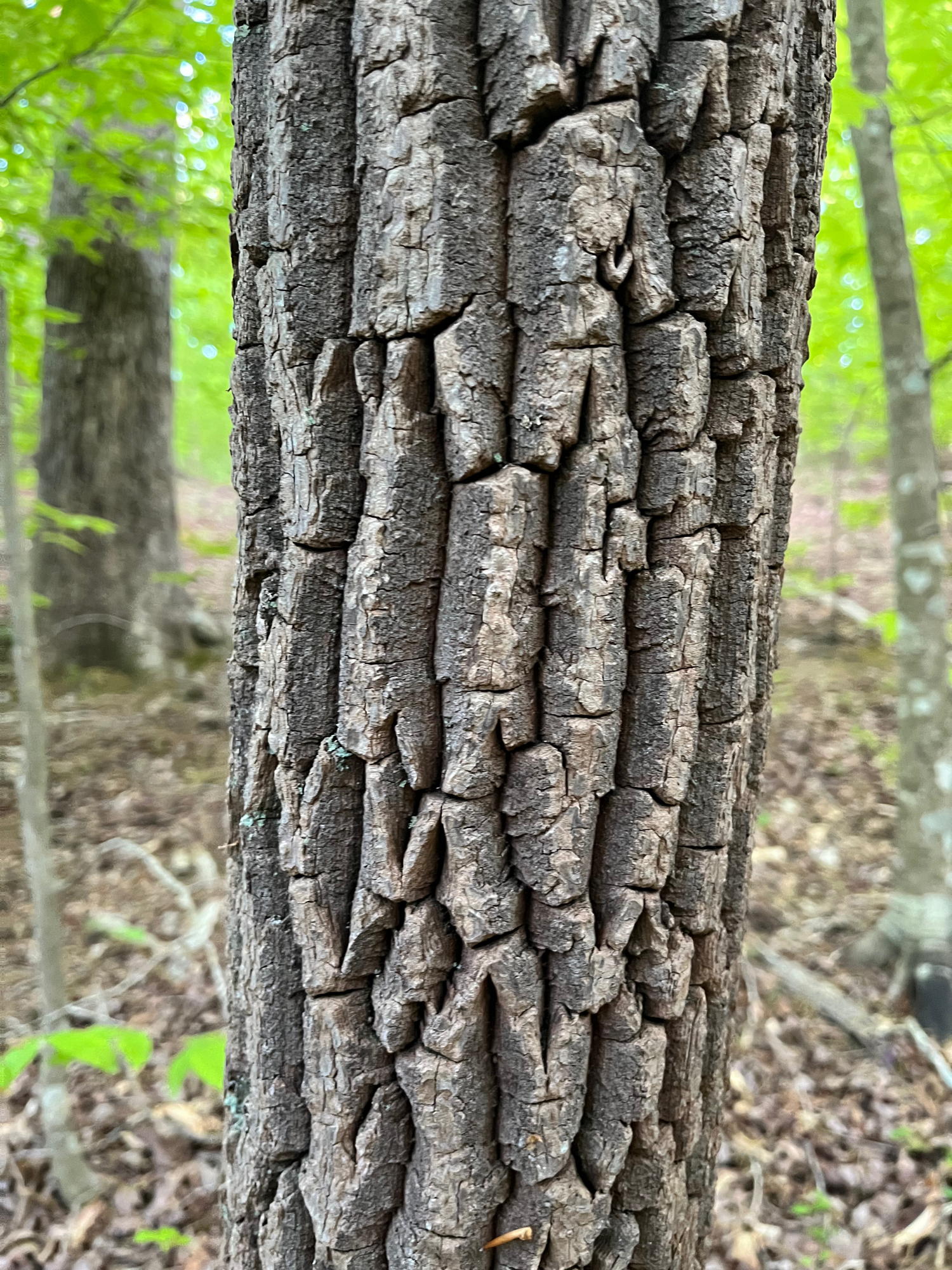
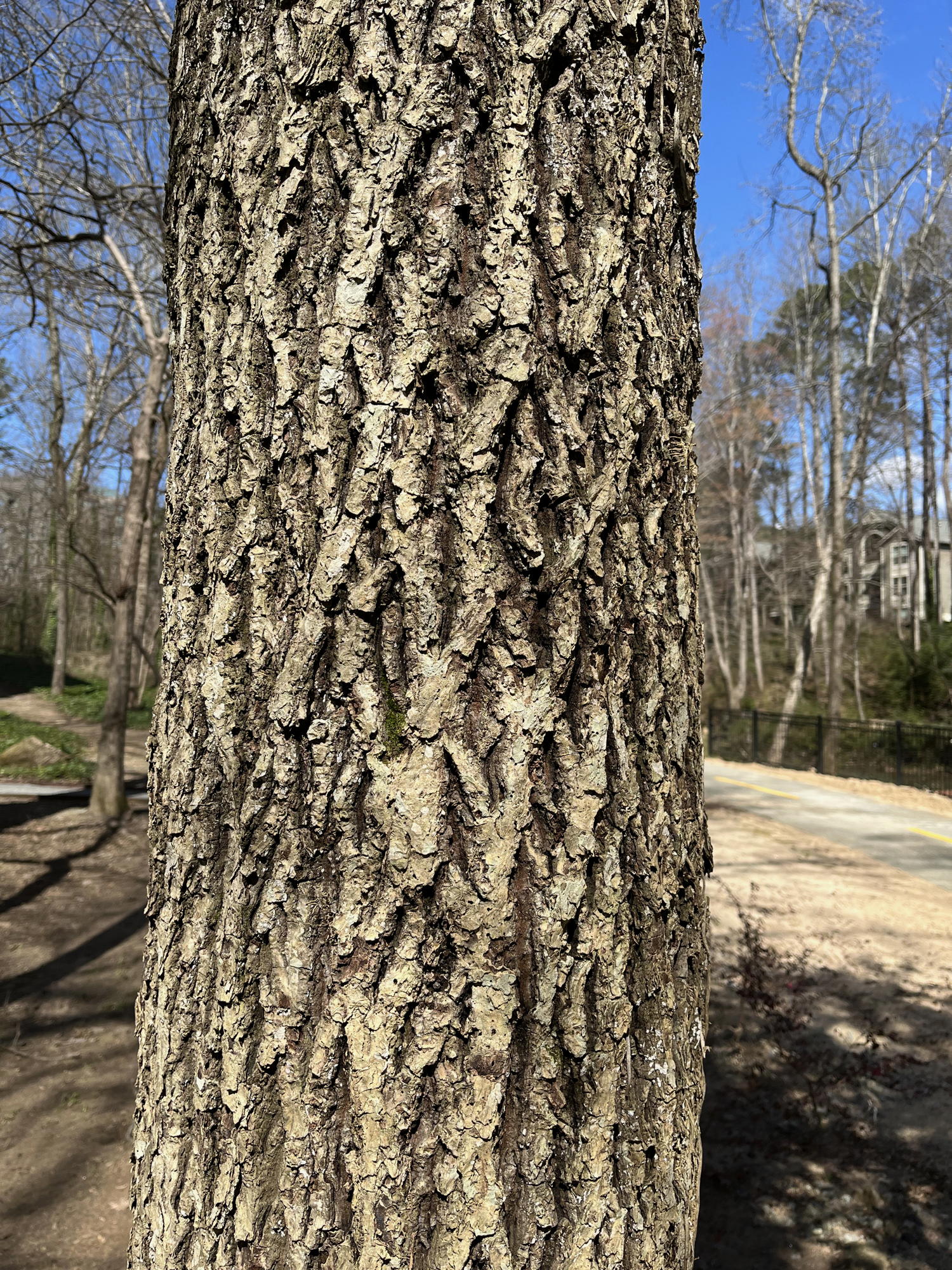
Which leads me to Sassafras. Sassafras is easily identified by its leaves because it has three distinct leaf shapes on the same tree, even the same branch. One shape, what I call the "three-fingered mitten," is particularly striking (see photos!). I’ve noticed a lot of Sassafras seedlings around my neck of the woods. I figure with so many seedlings, there must be adult trees around too – but I feel like I can never find one.
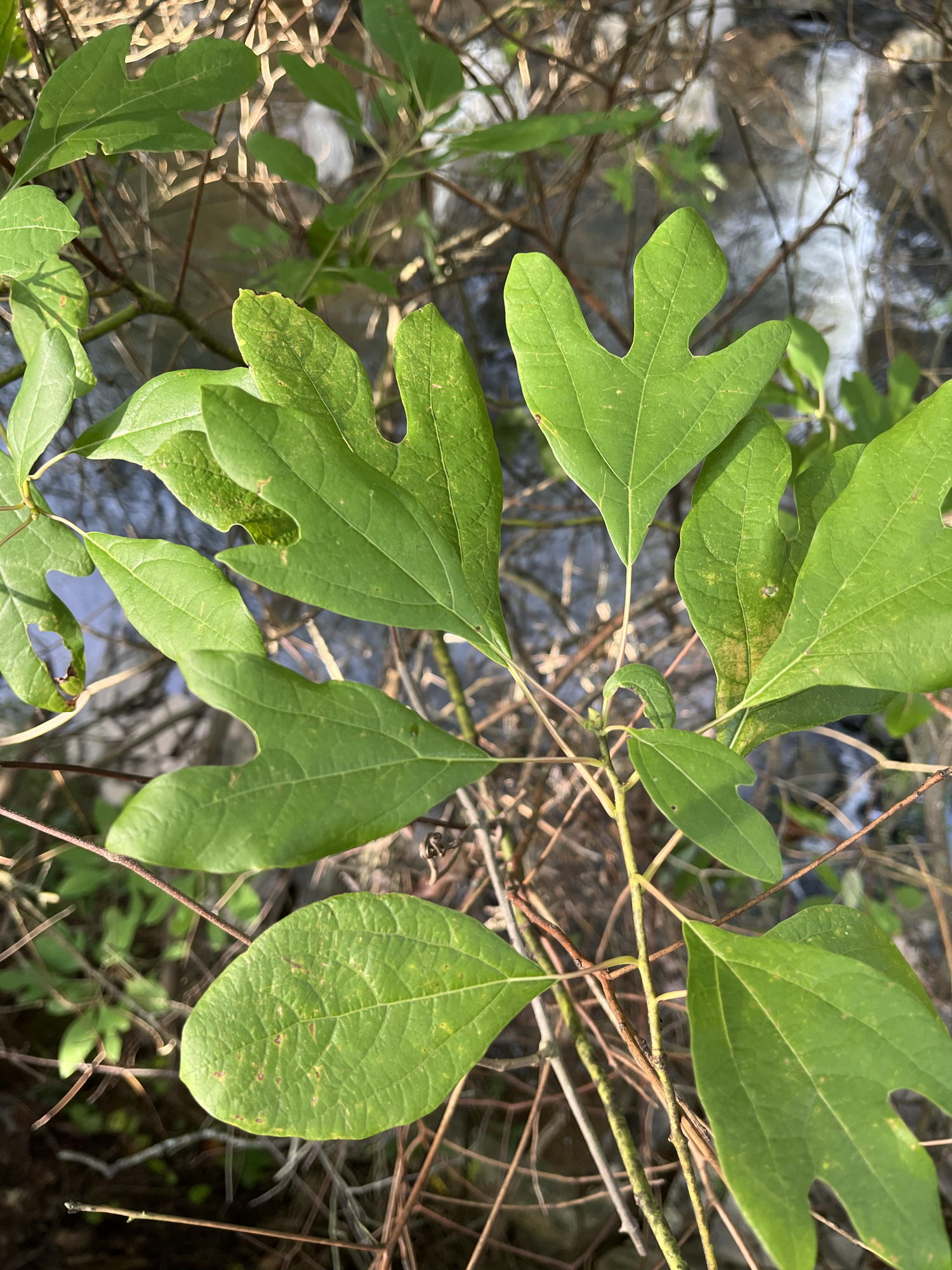

I remember discussing the lack of adult Sassafras trees with several participants in the Georgia Botanical Society’s Spring Pilgrimage this past May up in North Georgia. We were walking on trails deep in the mountains and we were seeing lots of Sassafras seedlings but no adult trees. There was some speculation that perhaps a disease targets Sassafras trees older than a few years.*
However, I remembered that I had seen a giant Sassafras tree on the Hike Inn Trail a few years ago. So on my hike with Carrie to the Hike Inn last week, we were looking for them. We didn’t manage to see a Sassafras tree until we were on the way back (on the same trail, yes), then we noticed quite a few. I never found the huge one that I remembered but I think it is there.
In any case, in the below pictures you will see why I mentioned Sourwood and Hickory above. Sassafras bark looks like a reddish cross between the two. See for yourself:

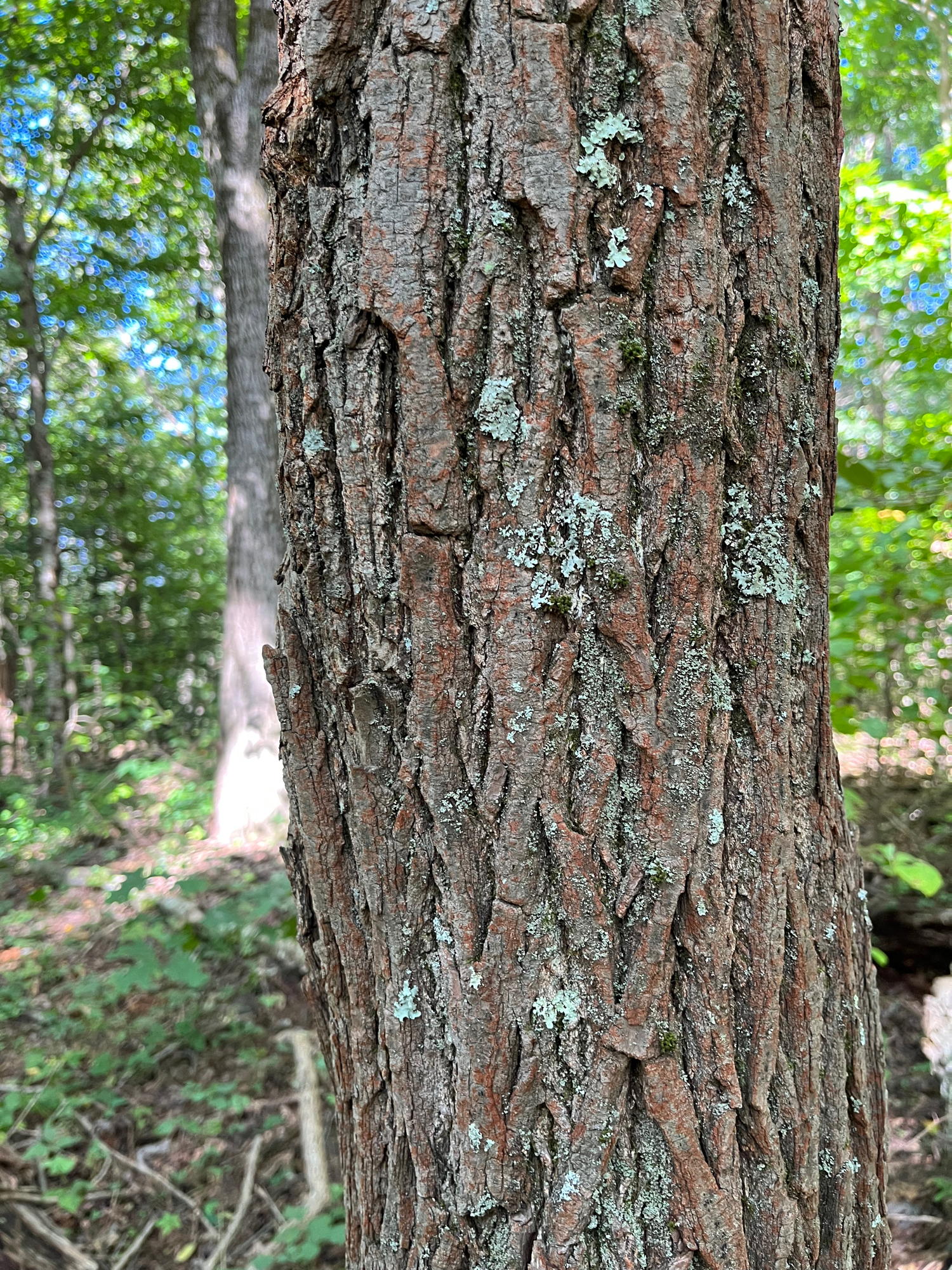
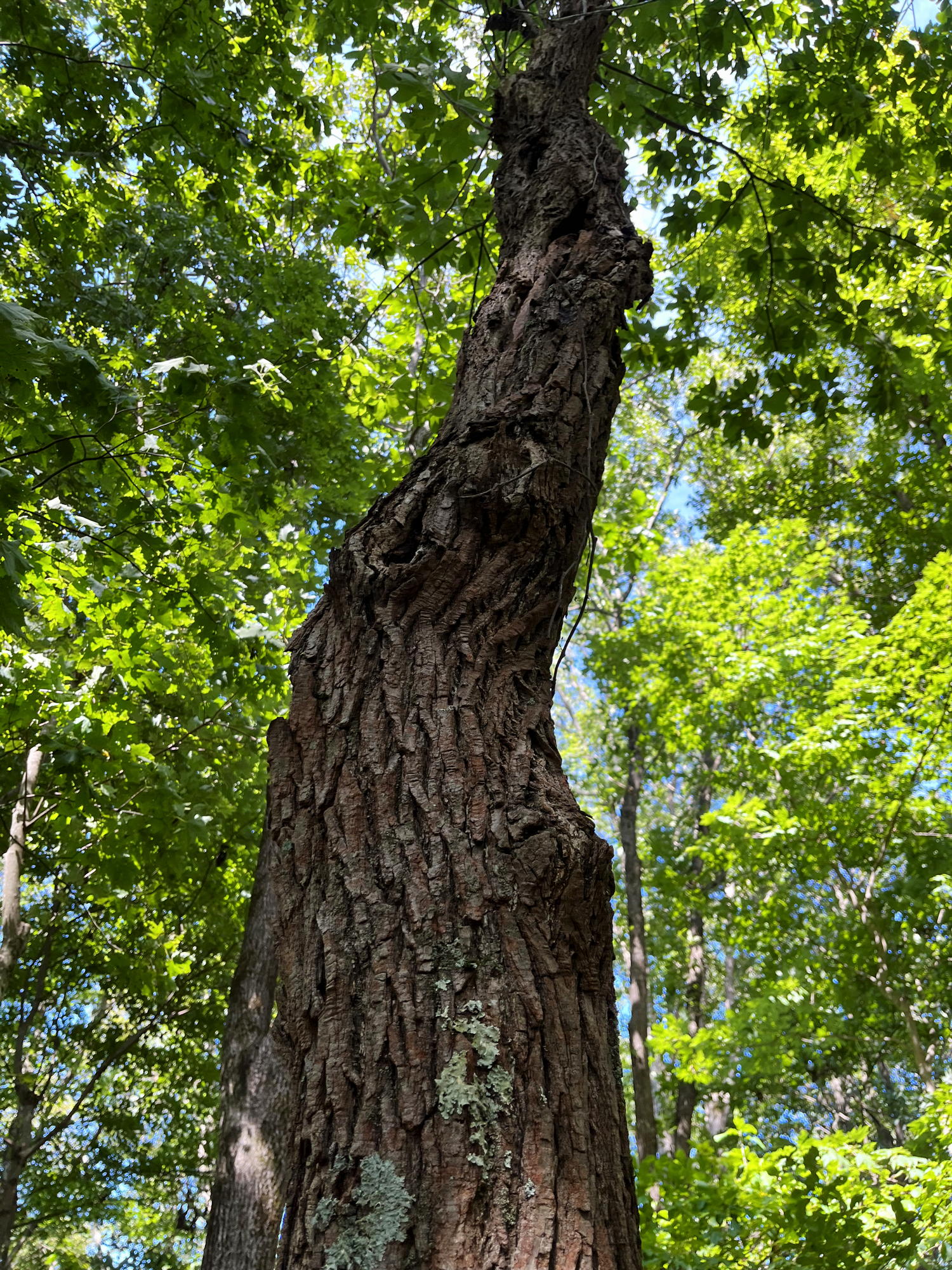
*After a bit of research, I found that Laurel Wilt is probably the cause of the scarcity of adult Sassafras trees:
“Laurel wilt is a disease of woody plants in the laurel family (Lauraceae). Hundreds of millions of redbay (Persea borbonia) trees have been killed by laurel wilt in the southeastern Atlantic Coastal Plain region of the United States (US). The disease has also killed large numbers of sassafras (Sassafras albidum) trees in forests and landscapes, and avocado (Persea americana) trees in commercial production. As of October 2019, laurel wilt was known to occur from Texas to North Carolina, south through Florida and north to Kentucky. Laurel wilt is expected to continue spreading through sassafras in the eastern US...”
Source: USDA National Invasive Species Information Center, https://www.invasivespeciesinfo.gov/terrestrial/pathogens-and-diseases/laurel-wilt
What I have noticed about Redbay is that it grows awhile and then succumbs to disease. I suspect Sassafras is suffering the same fate, which fits my observation.